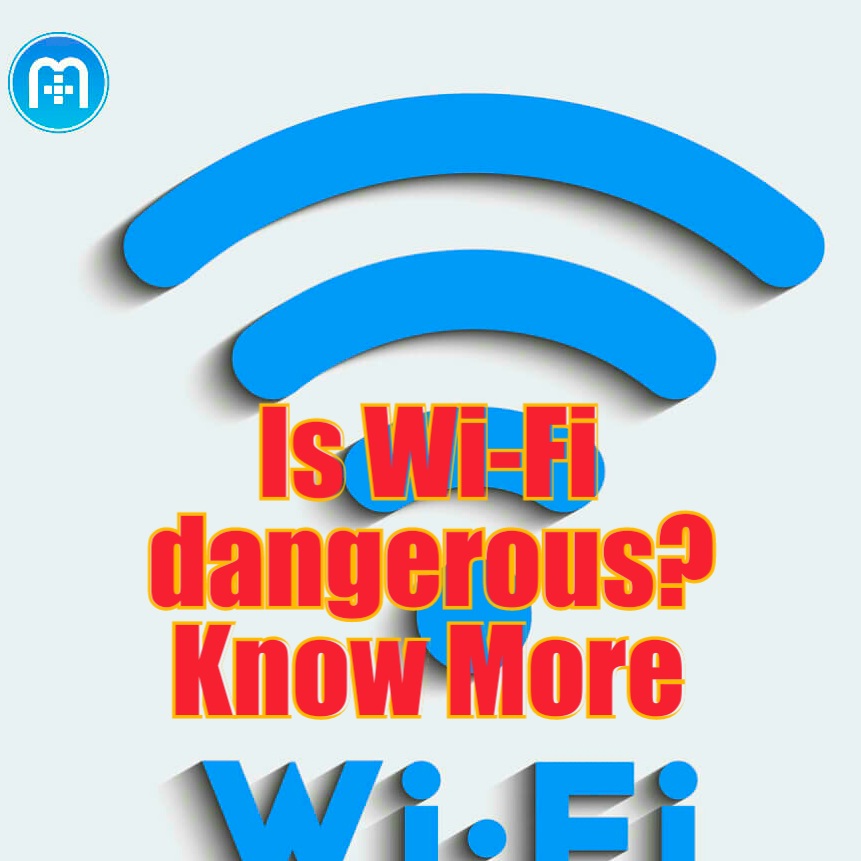Is Wi-Fi dangerous? Know More
Is Wi-Fi dangerous? Know More

Kids are taught in school that “air is present everywhere.” In the same way, we can say “Wi-Fi is also present everywhere” at home, office, malls, airports, hotels, restaurants or even cabs. Wi-Fi has become a necessity these days, but many have raised doubts regarding the safety of these invisible radiations that surround us all the time.
Wi-Fi stands for “Wireless Fidelity” and refers to a wireless network created by radiofrequency radiations used for communication between computers, tablets, phones, etc.
Let us look at some of the health concerns that have been tied to Wi-Fi systems:
Insomnia
Sleeping with Wi-Fi on or near a cell phone can lead to chronic sleep problems. The continuous emissions from Wi-Fi are said to interfere with sleep patterns.
Developmental issues
The rise in exposures to the Wi-Fi communication signals has raised public health concerns, especially for young people. Exposure to radiofrequency (RF) radiation from Wi-Fi devices has been said to disrupt the healthy cellular development, particularly during fetal development. A 2004 study linked RF exposure to delayed kidney development in rodent models.
Reduced Brain activity
A Chinese research published in 2014, reported that 30 min RF electromagnetic field radiation led to low-frequency fluctuations in some brain regions!
Reduced fertility
Heat from laptops is not good for sperms is well-known. However, an Argentinian study in 2012, reported that Wi-Fi radiations could reduce sperm motility and cause variations in the DNA. In the study, sperm samples were exposed for 4 hours to a wireless internet-connected laptop. The investigators found a significant decrease in the progressive sperm motility and a rise in sperm DNA fragmentation.
A Turkish study in 2013, based on animal models, raised questions about the safety of RF exposure from Wi-Fi devices on the potential effect on fertility and the integrity of germ cells. However, another Turkish study in the same year concluded that there is no evidence to support an increased risk of male and female infertility related to electromagnetic radiation exposure.
Cancer?
Can these radiations cause cancer is still a matter of debate? The International Agency for Research on Cancer has classified RF electromagnetic fields as possibly carcinogenic to humans (Group 2B). However, many animal studies also report no increased risk of cancer due to long-term exposure to RF fields.
Effect on Children
In a scientific review (2014) article, researchers from the Environmental Health Trust and University of California, USA, reported the plausible harm unborn babies and children face from microwave radiation (MWR) from wireless devices. The key highlights of this review are:
Children absorb more MWR than adults. It has been attributed to their brain tissues that are more absorbent, skulls relatively smaller and thinner.
The fetus is particularly vulnerable to MWR exposure.
A Swiss study in 2010 based on animal studies, reported that a child's bone marrow absorbs ten times higher MWR when compared with adults.
Bottomline
The studies performed on this topic are very mixed regarding outcome and quality. Wi-Fi emits high-frequency electromagnetic radiation (2.4 to 5 GHz), and apparently emit radiations at a little power (~0.1 Watt) from the router and computer antenna. This power falls very rapidly beyond a few inches from the antennas. The RF exposures from Wi-Fi systems are said to be far below the international exposure limits for RF energy.
Though many studies report biological effects due to Wi-Fi-type exposures, technical drawbacks prevent from arriving at conclusions about their plausible health risks. Most of these reports are based on animal models which need not necessarily translate to humans. More conclusive human studies are required to draw any conclusions.